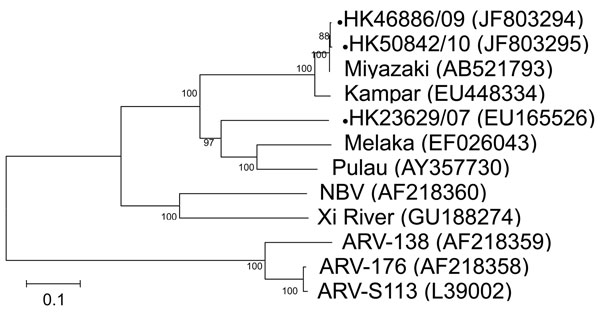Volume 18, Number 6—June 2012
Research
Virulence Potential of Fusogenic Orthoreoviruses
Figure 1

Figure 1. . . Phylogenetic tree of orthoreoviruses based on partial sequence alignment of the cell attachment protein (S1 gene segment). GenBank accession number for each sequence is in parentheses after the virus name. Numbers at nodes indicate bootstrap values based on 1,000 replicates. Dots indicate viruses isolated from 3 travelers who had returned from Indonesia to Hong Kong during 2007–2010. Scale bar indicates nucleotide substitutions per site. ARV, avian reovirus; NBV, Nelson Bay virus.
Page created: May 10, 2012
Page updated: May 10, 2012
Page reviewed: May 10, 2012
The conclusions, findings, and opinions expressed by authors contributing to this journal do not necessarily reflect the official position of the U.S. Department of Health and Human Services, the Public Health Service, the Centers for Disease Control and Prevention, or the authors' affiliated institutions. Use of trade names is for identification only and does not imply endorsement by any of the groups named above.